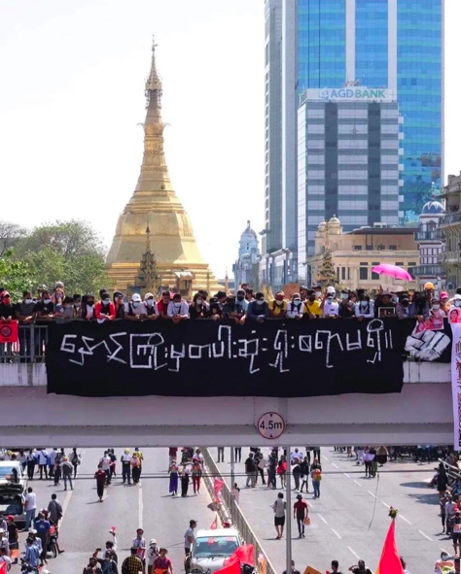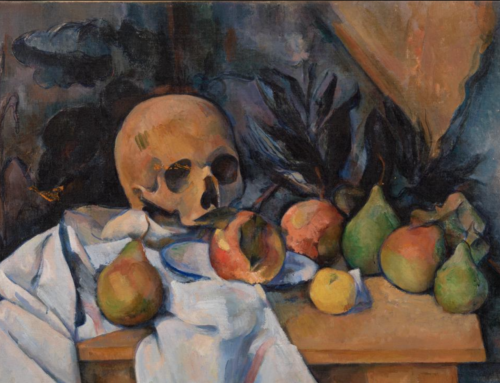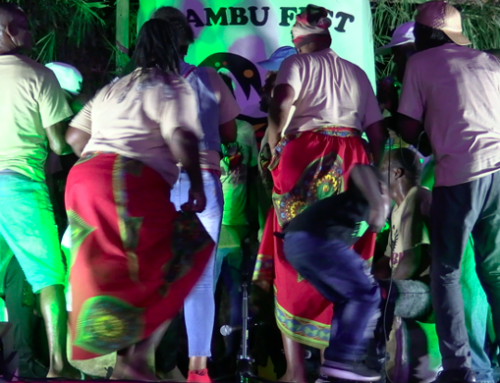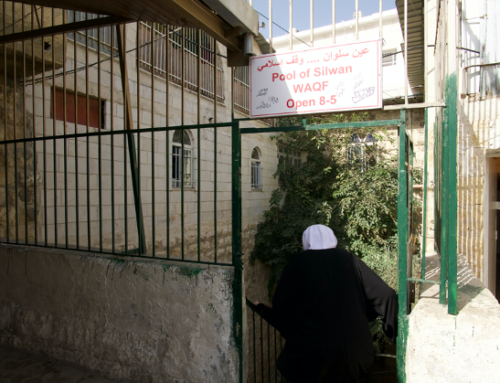
A banner drop in downtown Yangon, Myanmar following the coup of February 2021. Photo via Chulletin.
On February 19, 2021, eighteen days after Myanmar’s military seized power in a coup, a group clad in black dropped a banner from an overpass in Yangon, which had been engulfed in strikes, demonstrations, and blockades after the coup. The banner read: hnaung kyo: hmá t’ba: sone: shone: saya ma’ shi. The slogan is a translation of the phrase from the Communist Manifesto, “Nothing to lose but our chains.” The banner is faithful to the Burmese translation of the Manifesto, which we owe to the Communist Party of Burma (CPB), itself founded in 1939 in the throes of anti-colonial revolution.1 But meanings can shift in the process of translation, circulation, and (re)interpretation over time. One blogger rightly described the Burmese slogan’s literal meaning as “Nothing to lose but our strings of attachment.”
As weeks turned to months, and then years, and as the urban uprising transformed into a largely rural armed struggle, resistance groups continued to feature the slogan in strikes, demonstrations, and banner drops. Yet the “strings of attachment” meaning took on its own prominence, understood—by a wider public—as an indication of romantic or familial relations. This affective slant clearly differs. It signals a tie between the political and the personal; it reminds us that revolutions are lived, embodied affairs, with intimate worlds at stake. The slogan resonated, for instance, as a defiant lament against the killing of loved ones. The musician Thazin, wife of the rapper, ex-parliamentarian, and resistance fighter Phyo Zeya Thaw, tattooed the slogan across her chest after the military hanged her husband.

Thazin’s tattoo. Photo via Chulletin
In this dizzying moment—multiple times, struggles, and meanings intersect. I found myself asking: what kinds of attachments or entanglements tie a certain present to other times and temporalities? What might it mean to gain or to lose, or indeed to claim or insist upon, one set of historical attachments rather than another? How might a tethering together, a binding together, of specific historical presents promise a refashioning of collective struggle, of collective life—a refashioning at once radically intimate and world-historical?
Indeed, multiple histories ripple across and carry multiple meanings here. The revolutionary wave of 1848—sweeping across Europe, as captured by Marx and Engels in the Manifesto—sought to break free from the “chains” of class rule. Burma’s communists in the 1930s defined revolution as liberation from capitalist empire, including its matrix of affective ties (attachments, we might say): greed, desire, anger, ignorance (Aung 2019). Some of today’s revolutionaries lay claim to these revolutionary traditions. For others, like Thazin, revolution ties into ideas about martyrdom in Burmese political thought. Emancipation is a gamble, a wager. It requires intervention, intentionality, and a willingness to sacrifice one’s life and one’s relations — one’s strings of attachment. A bystander killed in a bombing is no martyr, no azani. One must choose the juncture of politics and sacrifice knowingly; one must gamble on revolution knowing that to do so is to risk everything. This knowing-ness, this consciousness, is important. The azani is one who can boldly—and quickly—“discriminate the proper from the improper,” being in essence “one who knows” (from the Pali janiya, or in Burmese, zaniya). Thazin figures her husband like an azani, locating him in a lineage of other revolutionaries in Myanmar’s past who risked everything, knowingly, for collective liberation. General Aung San, a CPB founder seen widely as the leader of Myanmar’s freedom struggle, is only the most famous azani. He was assassinated on the eve of national independence in 1947.
Nothing to lose but our chains—or our strings of attachment: this slogan is just one instance of something that is tying together multiple times and temporalities in the construction of a revolutionary present. There are plenty of other instances. Many of them, like this slogan, point to an upsurge in leftist discourse following the coup—something striking in a country where, since the 1988 uprising, opposition political thought has been defined by a post-Cold War liberal vocabulary of democracy and human rights. The resurgent leftism consists mainly of new and revitalized left organizations, which are recalling and reanimating older debates over theory and practice on Myanmar’s radical left. A kind of memory work, which is repurposing old institutions and old questions, is producing a re-enchanted revolutionary present.
The CPB, for instance, largely collapsed in 1989. But in March 2021, its exiled leadership revived its cadres and crossed back from Yunnan into Myanmar, re-establishing its armed wing, the People’s Liberation Army. A range of new organizations, such as the Revolutionary Marxism group and the Social Democratic United Front (SDUF) group, reflect vibrant tendencies associated with Trotskyism and democratic socialism. Two older groups to the left of Myanmar opposition politics, the Democratic Party for a New Society (DPNS) and the All Burma Federation of Student Unions (ABFSU), are newly active after periods of dormancy. Meanwhile, sections of the Federation of Garment Workers-Myanmar, and the University of Yangon Students Union, have seen workers and students take leading roles in the revolutionary upsurge.
Beyond this organizational landscape, specific practices have also helped sustain this moment. Strike activity has been crucial, from the industrial zones around Yangon to the strikes of civil servants and medical staff. Autonomist activities of resistance groups have seen increasing territory seized and administered under rebel control. Gendered practices of social reproduction have sustained armed struggle through emotional, physical, and material labor (see Hedström et al 2023; Hedström 2017). And the armed struggle itself, widely described as a people’s war, is restaging the question of Maoism’s relevance to revolutionary strategy in the present.
A growing ecology of left media has reinforced this resurgent leftism. The Struggle is an especially prominent journal published by Revolutionary Marxism. But other publications have also emerged. SDUF publishes the journal Social Democrat; Oway Journal is affiliated with ABFSU; and Sitho is published by Dagon University Student Union (and affiliates). Online, Signal groups, Telegram channels, and Facebook groups, like the Autonomist Telegram channel and the Libertarian Marxism Facebook group, provide digital platforms for explicitly leftist discussion and debate.
This all marks a notable change. For some three decades, the timeless liberal horizon associated with the end of the Cold War—a politics at the end of history, in Francis Fukuyama’s infamous formulation—had dominated formal opposition politics in Myanmar. Since the 1988 uprising, the National League for Democracy (NLD)—the party founded by Aung San Suu Kyi, the daughter of Aung San—had been at the forefront of organized opposition to military rule. The party’s stated commitment was to democracy, human rights, and the rule of law. Rule of law is key to foreign investment. And it was at the top of the NLD’s policy agenda when it assumed power following Myanmar’s short-lived handover from military to civilian rule in the 2011-2021 period.
In fact, red—the color of the NLD—was initially the prevailing color scheme of the post-coup insurrection in 2021. Convulsing downtown Yangon, protesters wearing the NLD’s color and waving NLD flags turned the city’s thoroughfares into seething seas of red. But a shift was also underway. By the time of the banner drop—executed by that group in Yangon wearing black, not red—the color black was becoming more and more visible in demonstrations. The change to black was seen as symbolizing a wider move away from the NLD’s agenda, an agenda premised on the advancement of liberal values by Myanmar’s lowland, Buddhist, Burman majority (people such as Suu Kyi). Black suggested an inchoate turn to alternatives. It signaled the increasing importance of protests and mobilization in minoritized ethnic areas—at the same time as the revolution started to look towards and reclaim different political genealogies, a different set of historical affiliations and attachments.
As this color shift suggests, Myanmar’s political discourse has moved away from the themes of post-Cold War liberalism, with its emphasis on individual liberty, private property, and market freedoms. The romance of bourgeois dissent, embodied by Suu Kyi during her many years under house arrest, is not the commanding theme it once was. Instead, resistance fighters, left organizations, and union militants, among others, have returned to and re-examined concerns that animated left discourse during Myanmar’s twentieth century—from anticolonial revolution to decolonization, and from communist insurgency to rebellion in the minoritized ethnic borderlands. Tactical questions about the mass strike and peasant insurgency, in the grammar of Leninism and Maoism, have resurfaced. So too have debates over class structure and political leadership. Which class or class fraction, if any, can or should provide revolutionary leadership? The relation between the national question and communal attachments, including those of ethnicity and religion, is once again pressing.2 The problem of inter-imperial rivalry has returned to the fore, as revolutionaries weigh the competing positions of the US and China.
In short, after the timelessness of Myanmar’s post-Cold War liberalism, Myanmar’s revolutionaries have returned to history. They are repurposing histories that, newly open, aim for a collective refashioning of future possibilities.
Put differently, Myanmar’s revolution is forging time—which need not be a surprise. Revolutions are temporal provocations (Cherstich, Holbraad, and Tassi 2020). They introduce new calendars. They combine and rework temporalities. They tend to rethink historicity and historical struggles in relation to revolutions past. Arguably, this frustrated Marx. In The Eighteenth Brumaire, Marx (1972, 10) was concerned by how revolutions take on styles and rhetoric drawn from the past:
Thus Luther put on the mask of the Apostle Paul, the Revolution of 1789 to 1814 draped itself alternatively as the Roman republic and the Roman empire, and the Revolution of 1848 knew nothing better to do than to parody, now 1789, now the revolutionary tradition of 1793 to 1795.
For Marx, revolution must ground itself in genuine historical rupture, not shroud itself in historical symbolism. This need for a radical break is what he meant, famously, by letting the dead bury the dead. “The social revolution of the 19thcentury,” he wrote, “cannot take its poetry from the past, but only from the future.”
That is the dominant interpretation of The Eighteenth Brumaire. Yet Walter Benjamin did not quite share it. For Benjamin, the essential act of revolution is to shatter the continuity of historical time, by seizing upon the past in the present. This position comes explicitly, he says, from Marx. Robespierre’s turn to Rome was a “tiger’s leap into the past” (Benjamin wrote) that blasted history open. “The same leap into the open air of history is the dialectical one,” he writes, “which is how Marx understood the revolution.” He continues, “the awareness that they are about to make the continuum of history explode is characteristic of the revolutionary classes at the moment of their action” (Benjamin 1968, 261).
But what does it take to make the continuum of history explode? We associate revolutions with dramatic, sometimes grisly, gestures and symbols: the gun and the guillotine, mass strikes and armed struggle, the overthrow of whole governments and social orders. As Myanmar’s strikes, demonstrations, and armed struggle have electrified cities, towns, and villages across the country—as revolutionaries return to and repurpose debates over Lenin and Mao that inspired, decades ago, Myanmar’s communist insurgency—we can see how Myanmar’s revolution is a revolution in stark terms. Even the banner drop, however fleeting, presents itself as a spectacle, a dramatic gesture. It presents itself as something noticeable, something striking. It invokes revolutionary tradition while reflecting and inflaming a gathering revolutionary present. A dialectical image par excellence, it seizes on the past in the present, capturing what Benjamin (1968, 261) called Jetztzeit: the fulsome, revolutionary presence of the now.
But there are many ways to bring the past into the present. There are many ways to work memory, to do memory work — to pry apart, to claw something back from, the rush of modernist time. One is to insist upon something otherwise lost. This might be a communal abundance lost to the ruthless capitalism of colonial modernity (for Burma’s early communists), or a loved one lost to a murderous regime (for Thazin). At issue, however, is not so much rescuing something from the wreckage of history—as if a revolutionary tradition, or a loved one killed, could simply be restored to an ever-lasting present. The attempt, rather, is to hold close or reclaim a relation that, today, must be tended to and reimagined precisely because times have changed so much. Remember Thazin’s tattoo. It offers no pretense that her husband, Phyo Zeya Thaw, still lives. Instead, it insists on his memory because he is lost. Emancipation—as Myanmar’s tradition of martyrdom teaches us—means risking, knowingly, one’s most intimate strings of attachment. This too constructs a revolutionary present.
Notes
[1] There are minor stylistic differences. The Manifesto in Burmese, as one would expect, is translated using the literary style, which changes some of the articles, whereas the banner is given in the colloquial, spoken style. I add as well that the CPB was founded by some of the same key figures who would go on to found the Myanmar military, not least Aung San. After independence, however, the CPB went on to wage a bitter, decades-long insurgency against the Myanmar military, before shifting into exile and now returning to fight the military again, as discussed below.
[2] Robert Narai’s article in Red Flag provides a helpful overview of these debates.
References
Aung, Geoffrey. 2019. “Reworking Bandung Internationalism: Decolonization and Postcolonial Futurism in Burma/Myanmar,” Critical Asian Studies 51(2): 198-209.
Benjamin, Walter. 1968. “Theses on the Philosophy of History.” In Illuminations. New York: Schocken Books.
Cherstich, Igor, Martin Holbraad, and Nico Tassi. 2020. Anthropologies of Revolution: Forging Time, People, Worlds. Berkeley, California: University of California Press.
Hedström, Jenny. 2017. “The Political Economy of the Kachin Revolutionary Household.” The Pacific Review 30(4): 581-595.
Hedström, Jenny, Hilary Oliva Faxon, Zin Mar Phyo, Htoi Pan, Moe Kha Yae, Ka Yay, and Mi Mi. 2023. “Forced Fallow Fields: Making Meaningful Life in the Myanmar Spring Revolution.” Civil Wars DOI: 10.1080/13698249.2023.2240620
Marx, Karl. 1972. The Eighteenth Brumaire of Louis Bonaparte. Moscow: Progress Publishers.
Geoffrey Rathgeb Aung is a postdoctoral research and teaching associate (Universitätsassistent) in the Department of Social and Cultural Anthropology at the University of Vienna. His research examines the aesthetics, politics, and historicity of capitalist development and revolutionary struggle in Myanmar. His current book project addresses the intersection between political life and logistical capitalism in Myanmar’s southern borderlands.
Cite As: Aung, Geoffrey Rathgeb. 2024. “A Revolutionary Present”, In “Back to the Present” edited by Timothy P.A. Cooper, Michael Edwards & Nikita Simpson, American Ethnologist website, January 26 2024, [https://americanethnologist.org/online-content/collections/back-to-the-present/a-revolutionary-present/]




